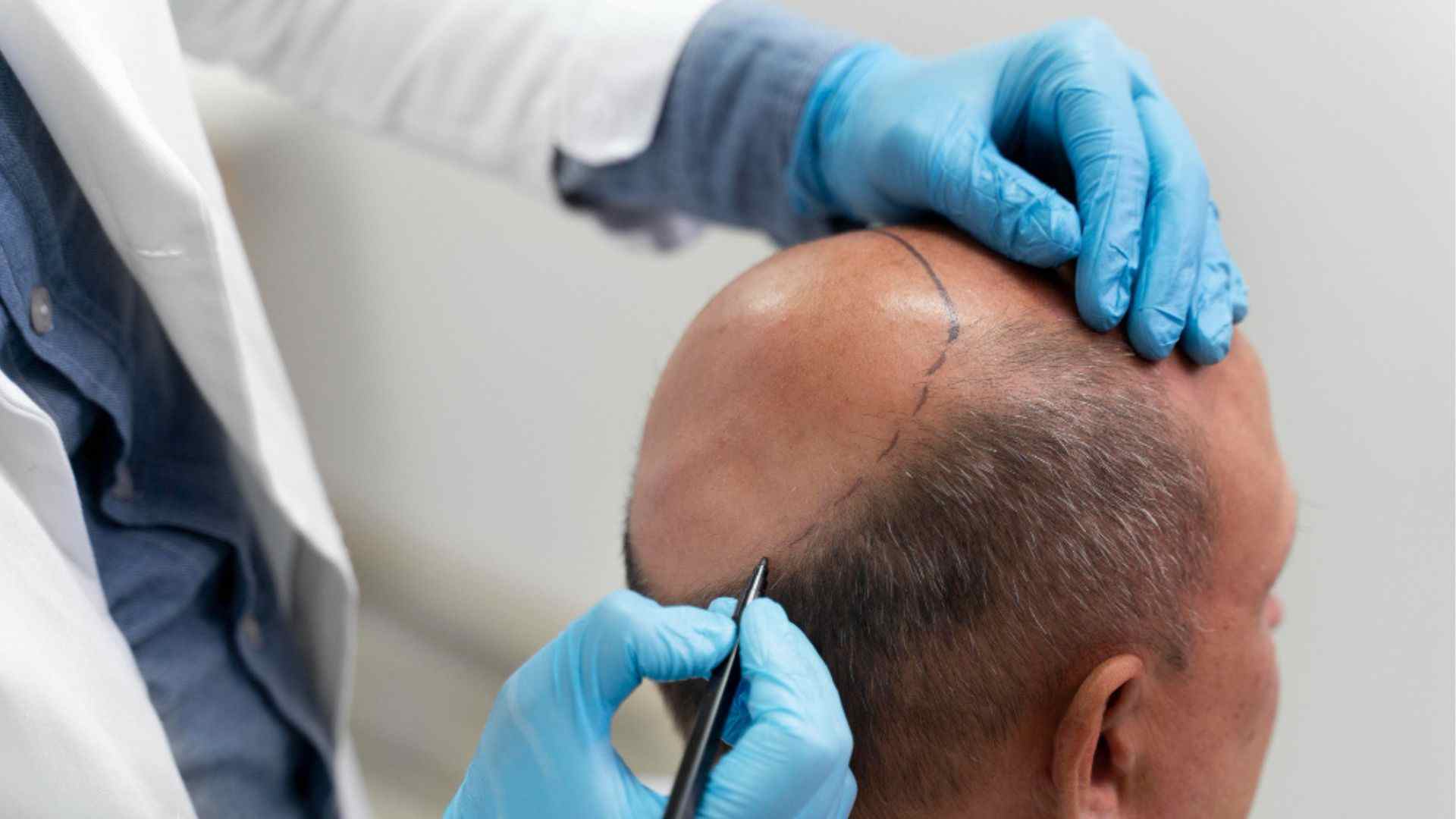Ultimate Guide to Hair Transplant Procedure – Everything You Need to Know

Hair transplants are a safe and effective solution for male pattern baldness. The procedure involves extracting healthy hair follicles from the scalp and implanting them in bald or thinning areas. The new follicles will continue to grow, resulting in natural-looking and permanent results.
However, before you embark on this journey, it is essential to understand what the procedure entails. This includes preparing for your treatment and understanding the recovery process and costs.
What is a Hair Transplant?
Hair transplantation is a surgical procedure in which healthy hair follicles are moved from the back and sides of your scalp to bald or thinning areas. This minimally invasive surgery has been around for decades. It can help you regain your confidence and style by correcting for the effects of male pattern baldness.
The earliest work on surgical hair restoration was done in the 1930s by dermatologists. One doctor developed a technique to treat burn patients and scalp injuries by extracting round sections of hair-bearing skin from the donor site, which would then heal and grow new hairs in the area they were moved to.
During modern hair transplant surgery, doctors harvest your healthy hair in two ways: strip transplantation and follicular unit extraction (FUE). With strip transplantation, surgeons remove a strip of hair-bearing skin from the back or side of your head. They then stitch this area closed, leaving a small line wholly hidden behind your existing hair. Your surgeon will then divide the strip into smaller groups of follicular units to be replaced in the bald or thinning areas.
How Does a Hair Transplant Work?
The hair transplant procedure relocates healthy hair follicles from one part of your head (known as the “safe zone”) to bald or thinning areas. Unlike the old-fashioned hair plugs, these new follicles will grow permanently because they resist DHT.
There are several types of hair transplants. The more traditional method, follicular unit strip surgery (FUT), removes a wide strip of scalp from the back or side of your head and divides it into tiny follicular units containing one to four hairs each. The surgeon will then relocate these follicles to the thinning or balding areas of your scalp to increase thickness.
There’s also a less invasive option known as follicular unit extraction (FUE), which allows the doctor to harvest and transplant individual hair follicles without leaving a long scar. Another popular method is the ARTAS robot, which automates the entire procedure for optimal results and reduces patient discomfort. Both methods can leave minor marks on the scalp, but the scars will be hidden in the hair you already have.
How Long Does a Hair Transplant Last?
A permanent remedy is hair transplant surgery and balding hair. The two most common procedures — Follicular Unit Transplantation (FUT) and Follicular Unit Extraction (FUE) — move healthy hair follicles from the back of the scalp to the balding areas on top or front of the head. The results of these hair restoration treatments last a lifetime for most patients.
Immediately after your procedure, you must cover the scalp in bandages for several days. Your surgeon may recommend pain medications as well. It’s also normal for some transplanted hair to fall out as it sheds, but this is only temporary and should resume growing normally.

It can take about six months to see significant changes in your hair growth, but you should notice the full results of a transplant after a year. Some people find they need to have a second hair transplant to get the look they desire. This can be due to a failure of some of the transplanted follicles to grow or an unsatisfactory aesthetic appearance.
What Are the Side Effects of a Hair Transplant?
When done by an experienced surgeon, a hair transplant is safe. However, it carries dangers just like any surgical procedure does. Infection, severe bleeding, and scarring are a few of these.
The hair-bearing skin will be removed from your scalp during the procedure and then transplanted into the balding part of your head. This process can leave scars, depending on how your surgeon does it. If they make significant cuts, you may have noticeable scars that are difficult to hide.
Avoiding smoking will lessen these negative consequences, which impede recovery and raise infection risk. You should also take blood-thinning medications sparingly, as too many can lead to excess bleeding during and after the procedure. It’s also important to avoid physical exercise for the first few days after your hair transplant, as excessive swelling can damage your newly transplanted follicles. A healthy diet should also contain a lot of protein and vitamin D, which can promote faster hair growth. You might also experience temporary numbness following the surgery, fading as your wounds heal.
How Can I Find a Good Hair Transplant Surgeon?
Before you choose a surgeon for your hair transplant, it’s essential to do some research and find out about their qualifications. It would help to look at a surgeon’s patient gallery for their results. Ideally, you want to see a wide range of high-quality photos to make an informed decision.
A qualified surgeon should also be able to thoroughly describe the operation and address any concerns you might have. They should also have extensive experience performing hair restoration surgeries. For example, they should be able to demonstrate that they have performed thousands of transplants. This will help them to come up with the best diagnosis for you.
You should also check that the clinic has indemnity insurance in place. You can do this by asking to see a copy of the policy. The name on the policy should match the clinic’s trading name. You must do this to avoid being scammed by a non-reputable clinic.

